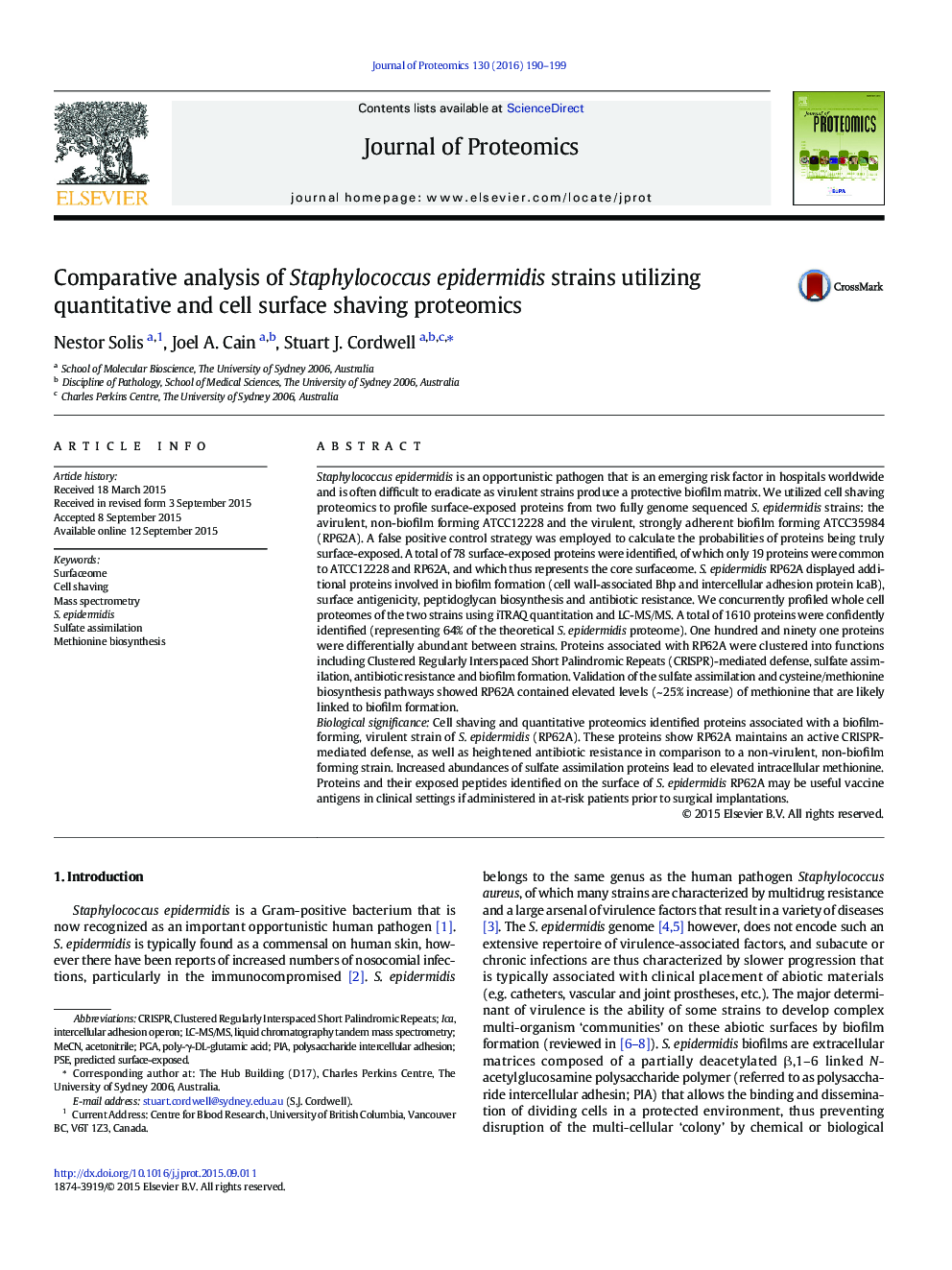| Article ID | Journal | Published Year | Pages | File Type |
|---|---|---|---|---|
| 1225888 | Journal of Proteomics | 2016 | 10 Pages |
•Identified 1610 proteins from S. epidermidis (non-virulent, non-biofilm ATCC12228 and virulent, biofilm forming RP62A).•Proteins associated with CRISPR-mediated defense and antibiotic resistance, rather than virulence, were associated with RP62A.•Elevated sulfate assimilation and Cys / Met biosynthesis proteins result in increased intracellular methionine in RP62A.•Cell shaving identified surface-exposed proteins with IcaB and Bhp only identified on the surface of RP62A.
Staphylococcus epidermidis is an opportunistic pathogen that is an emerging risk factor in hospitals worldwide and is often difficult to eradicate as virulent strains produce a protective biofilm matrix. We utilized cell shaving proteomics to profile surface-exposed proteins from two fully genome sequenced S. epidermidis strains: the avirulent, non-biofilm forming ATCC12228 and the virulent, strongly adherent biofilm forming ATCC35984 (RP62A). A false positive control strategy was employed to calculate the probabilities of proteins being truly surface-exposed. A total of 78 surface-exposed proteins were identified, of which only 19 proteins were common to ATCC12228 and RP62A, and which thus represents the core surfaceome. S. epidermidis RP62A displayed additional proteins involved in biofilm formation (cell wall-associated Bhp and intercellular adhesion protein IcaB), surface antigenicity, peptidoglycan biosynthesis and antibiotic resistance. We concurrently profiled whole cell proteomes of the two strains using iTRAQ quantitation and LC-MS/MS. A total of 1610 proteins were confidently identified (representing 64% of the theoretical S. epidermidis proteome). One hundred and ninety one proteins were differentially abundant between strains. Proteins associated with RP62A were clustered into functions including Clustered Regularly Interspaced Short Palindromic Repeats (CRISPR)-mediated defense, sulfate assimilation, antibiotic resistance and biofilm formation. Validation of the sulfate assimilation and cysteine/methionine biosynthesis pathways showed RP62A contained elevated levels (~ 25% increase) of methionine that are likely linked to biofilm formation.Biological significanceCell shaving and quantitative proteomics identified proteins associated with a biofilm-forming, virulent strain of S. epidermidis (RP62A). These proteins show RP62A maintains an active CRISPR-mediated defense, as well as heightened antibiotic resistance in comparison to a non-virulent, non-biofilm forming strain. Increased abundances of sulfate assimilation proteins lead to elevated intracellular methionine. Proteins and their exposed peptides identified on the surface of S. epidermidis RP62A may be useful vaccine antigens in clinical settings if administered in at-risk patients prior to surgical implantations.
Graphical abstractFigure optionsDownload full-size imageDownload high-quality image (144 K)Download as PowerPoint slide
